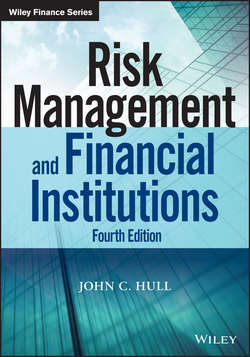Читать книгу Risk Management and Financial Institutions - Hull John C. - Страница 6
CHAPTER 1
Introduction
ОглавлениеImagine you are the Chief Risk Officer (CRO) of a major corporation. The Chief Executive Officer (CEO) wants your views on a major new venture. You have been inundated with reports showing that the new venture has a positive net present value and will enhance shareholder value. What sort of analysis and ideas is the CEO looking for from you?
As CRO it is your job to consider how the new venture fits into the company's portfolio. What is the correlation of the performance of the new venture with the rest of the company's business? When the rest of the business is experiencing difficulties, will the new venture also provide poor returns, or will it have the effect of dampening the ups and downs in the rest of the business?
Companies must take risks if they are to survive and prosper. The risk management function's primary responsibility is to understand the portfolio of risks that the company is currently taking and the risks it plans to take in the future. It must decide whether the risks are acceptable and, if they are not acceptable, what action should be taken.
Most of this book is concerned with the ways risks are managed by banks and other financial institutions, but many of the ideas and approaches we will discuss are equally applicable to nonfinancial corporations. Risk management has become progressively more important for all corporations in the last few decades. Financial institutions in particular are finding they have to increase the resources they devote to risk management. Large “rogue trader” losses such as those at Barings Bank in 1995, Allied Irish Bank in 2002, Société Générale in 2007, and UBS in 2011 would have been avoided if procedures used by the banks for collecting data on trading positions had been more carefully developed. Huge subprime losses at banks such as Citigroup, UBS, and Merrill Lynch would have been less severe if risk management groups had been able to convince senior management that unacceptable risks were being taken.
This opening chapter sets the scene. It starts by reviewing the classical arguments concerning the risk-return trade-offs faced by an investor who is choosing a portfolio of stocks and bonds. It then considers whether the same arguments can be used by a company in choosing new projects and managing its risk exposure. The chapter concludes that there are reasons why companies – particularly financial institutions – should be concerned with the total risk they face, not just with the risk from the viewpoint of a well-diversified shareholder.
